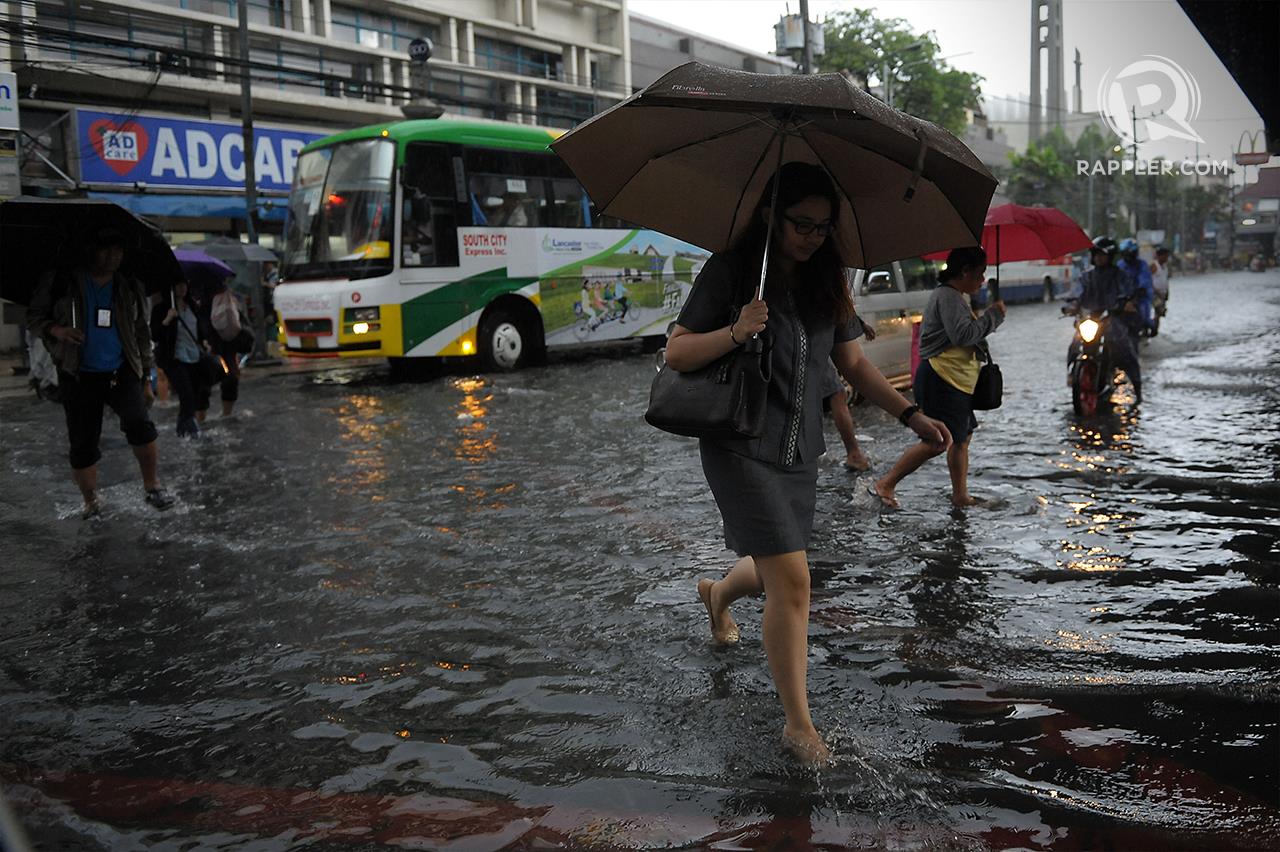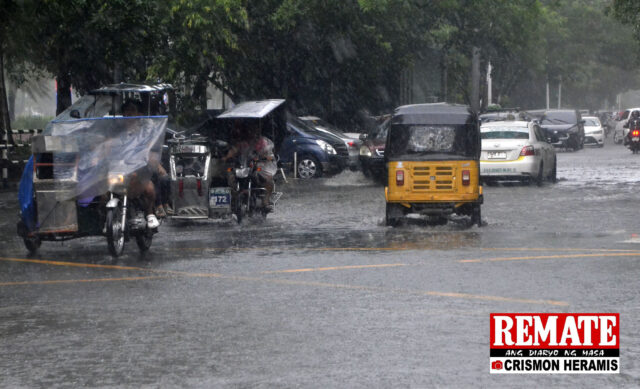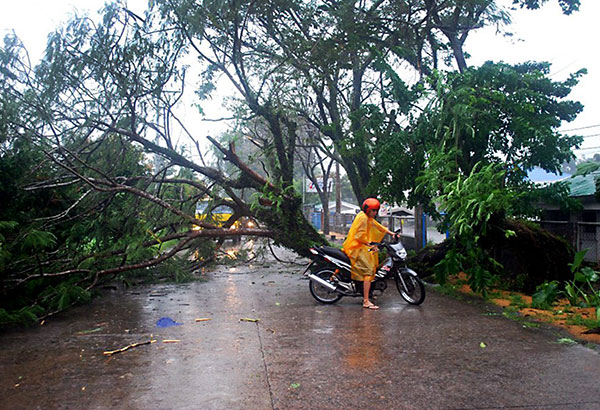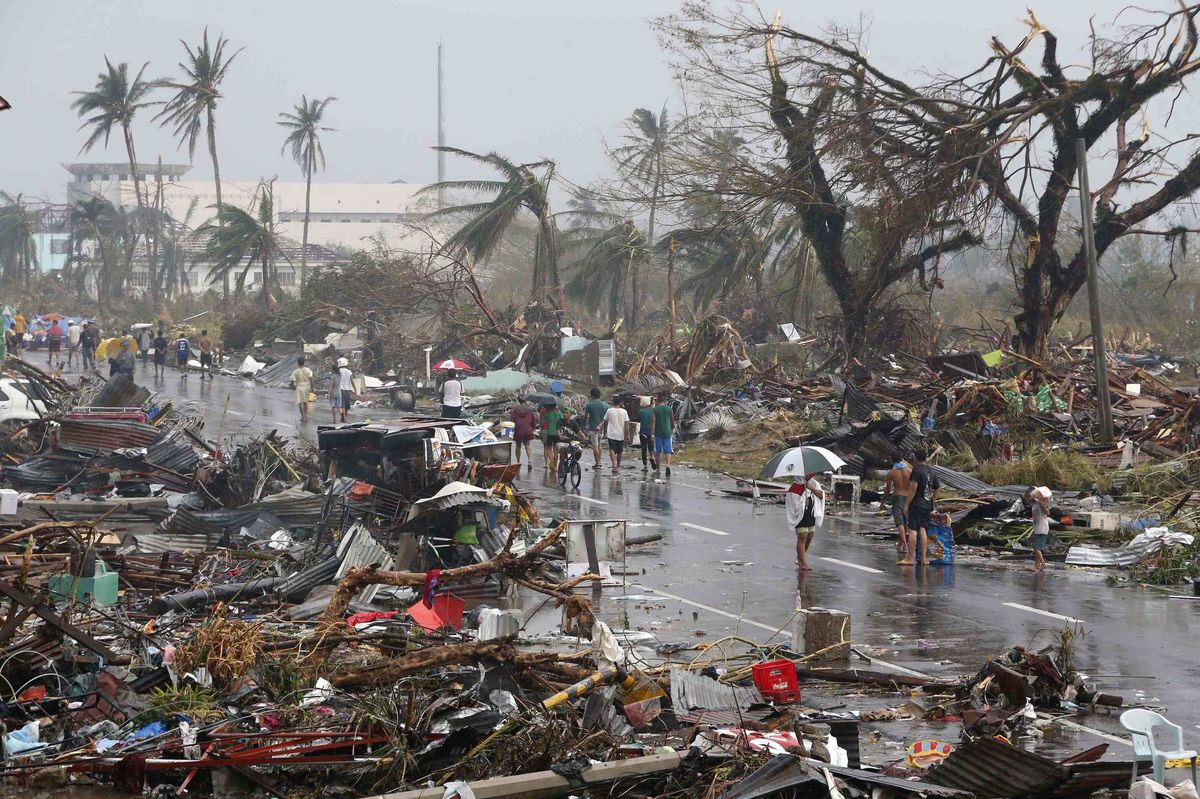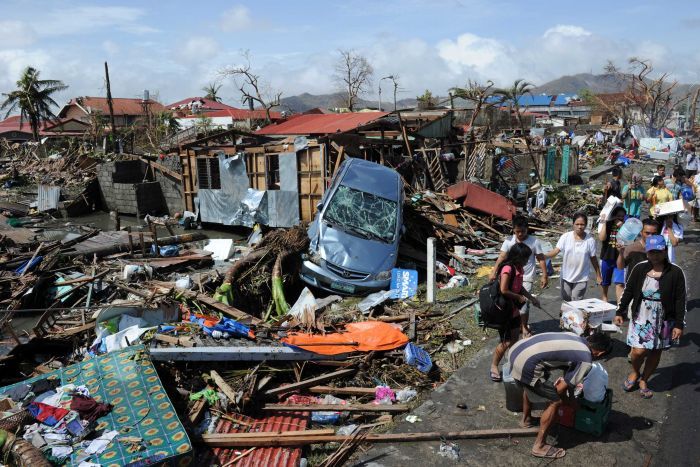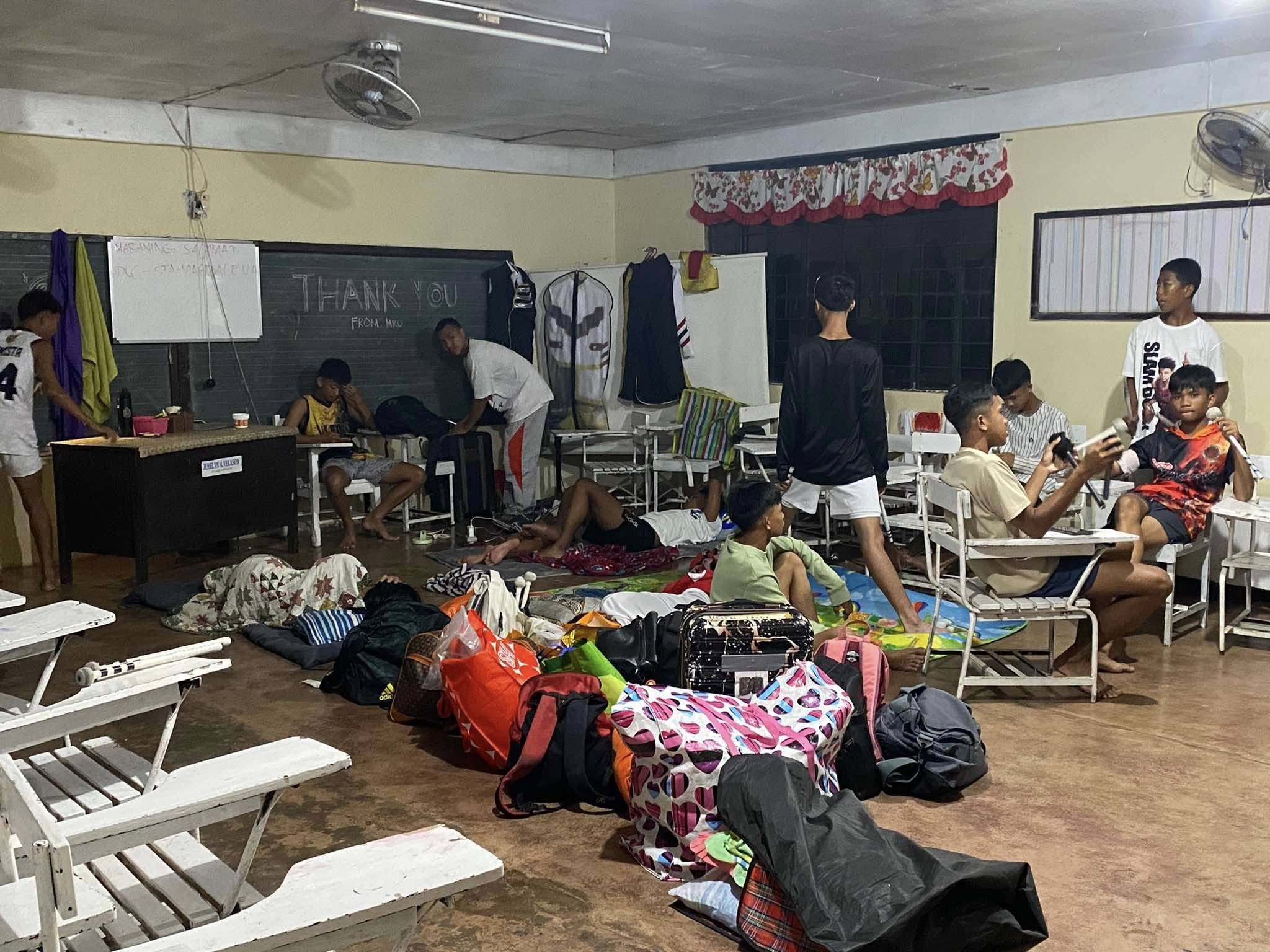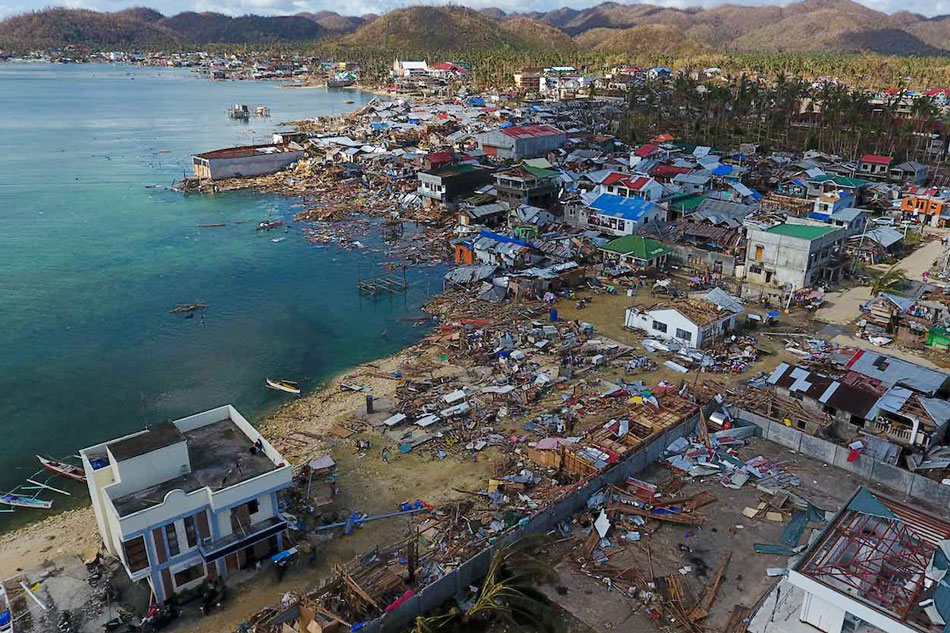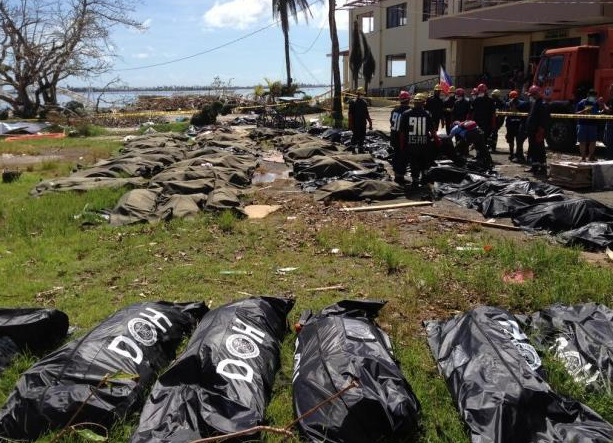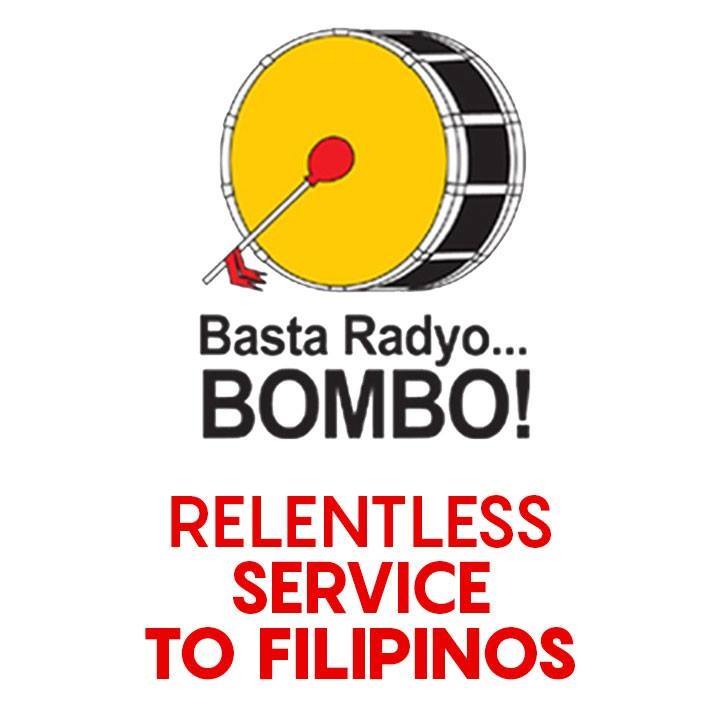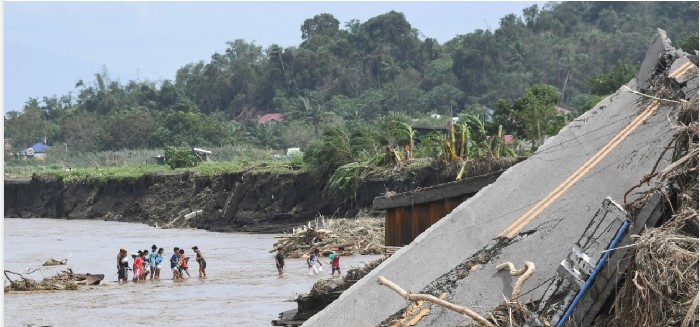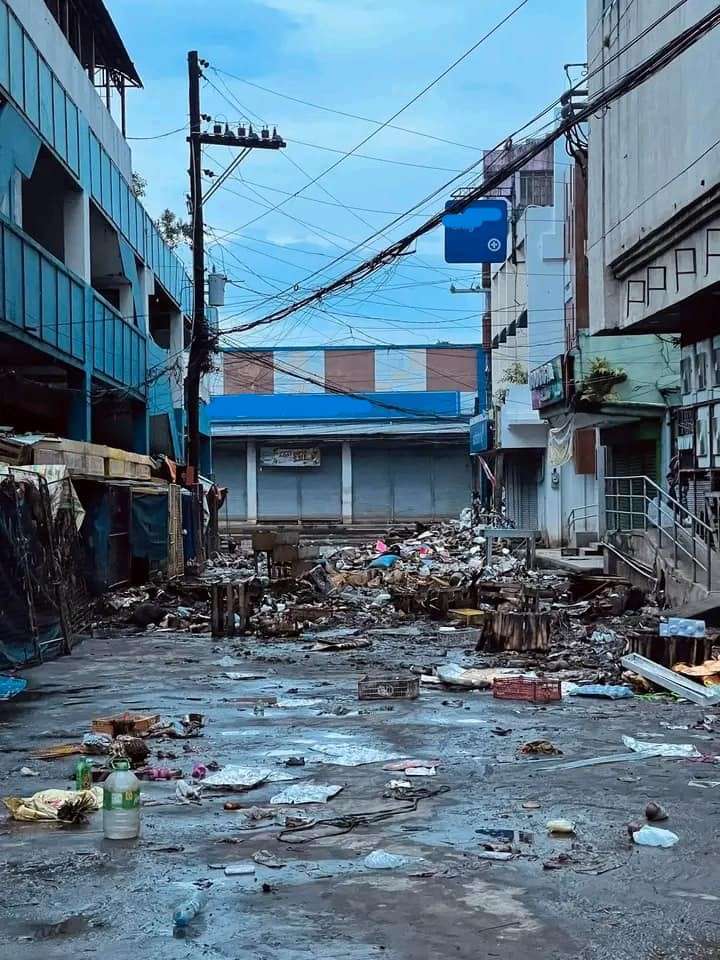Storm
A type of weather condition that brings strong winds and heavy rain, which can lead to severe flooding, high waves along the coast, and landslides. These storms form in the Pacific Ocean.
More InformationTYPES OF STORMS
Storms are categorized based on wind strength and classified according to the highest wind impact in an area.
More InformationThe Philippines is frequently hit by storms because it is close to the Pacific Ocean, where there is a lot of warm and humid air that fuels and strengthens storms.
More InformationTROPICAL CYCLONE WARNING SYSTEM SIGNALS (TCWS)
Tropical Depression (Signal number 1)
Wind Threat:
39-61 km/h (22-33 kt, 10.8-17.1 m/s)
Warning Time: 36 hours
TROPICAL STORM (SIGNAL NUMBER 2 )
Wind Threat: 62-88 km/h (34-47 kt, 17.2-24.4 m/s)
Warning Time: 24 hours
Severe Tropical Storm (Signal Number 3)
Wind Threat: 89-117 km/h (48-63 kt, 24.5-32.6 m/s)
Warning Time: 18 hours
Typhoon (Signal Number 4)
Wind Threat: 118-184 km/h (64-99 kt, 32.7-51.2 m/s)
Warning Time: 12 hours
Typhoon (Signal Number 5)
Wind Threat: 185 km/h or higher (100 kt or higher, 51.3 m/s or higher)
Warning Time: 12 hours
RELATED NEWS
THINGS TO DO BEFORE A TYPHOON
01 Stay updated on weather reports and safety announcements.
Always listen to PAGASA’s weather reports to assess the risk in your area. Monitoring news is crucial to stay informed about upcoming typhoons or bad weather.
02 Learn about your community’s evacuation warning system.
Know how evacuation warnings will be communicated in your area. Identify evacuation centers to ensure quick decision-making if evacuation is necessary.
03 Inspect your house and reinforce weak or damaged areas.
Before the typhoon arrives, check your house and fix any weak spots, such as roofs, windows, and walls, to prevent severe damage.
04 Prepare a survival kit with essential family supplies.
Pack a survival kit containing food, water, a flashlight, batteries, a first-aid kit, and important documents to ensure your family’s safety.
05 Move animals to a safe location.
If you have pets or livestock, make sure you have a plan to relocate them to a secure place to prevent harm during the typhoon.
06 If authorities issue an evacuation order, leave immediately.
Bring essential belongings and head to a safer location as instructed by local authorities.
07 Stay in high places to avoid floods.
If there is a risk of flooding, stay in elevated areas. Avoid wading through floodwaters as they can be dangerous and contaminated.
08 Avoid traveling, especially in hazardous areas.
Do not travel unless absolutely necessary, especially in landslide-prone or flood-prone areas. Staying at home is safer during dangerous weather conditions.
09 Maintain clear communication with family and authorities for safety.
Ensure your family has a clear emergency plan and prepare a list of emergency hotlines for immediate assistance.
10 Stock up on sufficient food, water, and medication.
Prepare enough food and water to last at least two days or more. If you take medication, ensure you have an adequate supply.
11 Secure household items that could be blown away by strong winds.
Remove outdoor items such as tarpaulins, potted plants, and other objects that could be carried away by strong winds.
12 Ensure your vehicle has enough fuel in case evacuation is necessary.
Before the typhoon arrives, make sure your vehicle has enough fuel to avoid running out during evacuation.
WHAT TO DO DURING A TYPHOON
01 Stay calm. Do not leave your house or evacuation center and stay updated with the latest weather reports.
Going outside is dangerous, especially in coastal areas, due to risks of storm surges, floods, and landslides. It is important to stay tuned to updates from PAGASA, LGUs, and other agencies to determine if your location is at risk.
02 Turn off the main power switch and water valve.
In flood-prone areas like Juban, Magallanes, and Gubat, always cut off electricity to prevent electrocution. Also, ensure the water supply is turned off to avoid contamination, especially in flooded areas.
03 Use a flashlight or emergency lamp. Be cautious when using candles or gas lamps to prevent fires.
Power outages are common in Sorsogon during typhoons, making flashlights and emergency lamps essential. If using candles, keep them away from children and ensure they are in a safe position to prevent fires.
04 Stay away from glass windows to avoid injury.
Strong winds from the typhoon, especially in coastal areas like Donsol and Prieto Diaz, can shatter glass. Stay in a secure location with sturdy walls and avoid windows to prevent accidents.
05 Cancel any travel and outdoor activities.
During a typhoon, avoid leaving your house or evacuation center. Traveling is dangerous, especially in flood-prone areas.
WHAT TO DO AFTER A TYPHOON
01 Wait for official clearance before returning home.
Ensure that the area is safe before going back. Authorities will check for lingering hazards such as landslides, floods, or structural damage. Do not rush back home unless permitted.
02 Stay away from fallen trees, damaged buildings, and power lines.
These could pose safety risks, such as sudden collapses or electrical hazards. Report them to the authorities for proper handling.
03 Avoid unnecessary movement to allow emergency responders to operate smoothly.
If unnecessary, avoid going outside to keep roads clear for rescue teams and relief efforts. If you wish to help, volunteer while following the authorities’ instructions.
04 Be cautious when repairing damaged parts of your home.
Ensure walls and roofs are stable before entering. If you notice any structural damage, consult an expert before attempting repairs.
05 Ensure electrical outlets and appliances are dry before restoring power.
If your area was flooded, have an electrician inspect wires, outlets, and appliances before turning the power back on to avoid accidents.
06 Remove stagnant water from containers to prevent mosquito breeding.
After a typhoon, standing water can accumulate in cans, pots, and tires, creating breeding grounds for mosquitoes. Empty or cover these to prevent dengue.
